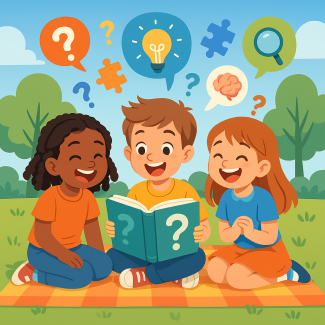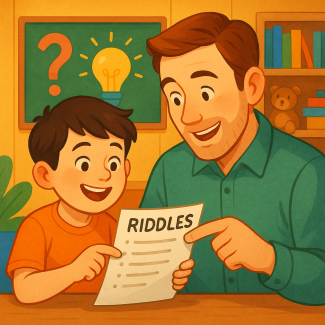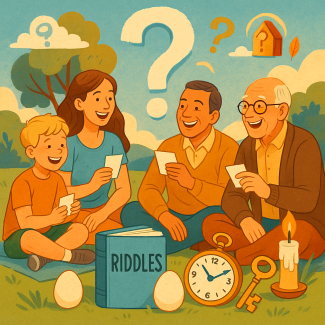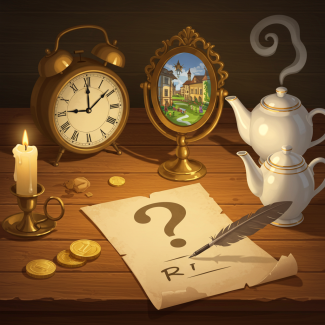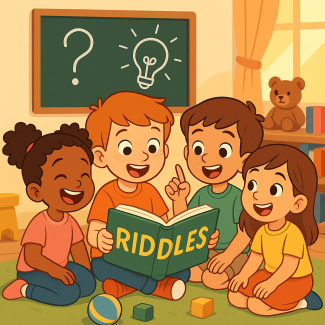
Fun and Simple Riddles Every Child Will Love
What Makes Riddles Great for Children?
Riddles for kids are more than just jokes or quirky word games. They're tools for mental development, creativity, and family bonding. These clever little puzzles encourage children to think outside the box, develop problem-solving skills, and enjoy language in an engaging way.
Whether you're a parent, teacher, or caregiver, adding a few easy riddles to your daily routine can bring smiles and stimulate learning. The key is to make sure the riddles are age-appropriate, understandable, and of course, funny and light-hearted.
Benefits of Easy Riddles for Young Minds
Children benefit from riddles in various ways:
- Cognitive development: Riddles boost comprehension and analytical skills.
- Language learning: They introduce new vocabulary in a playful setting.
- Memory training: Remembering riddles and their punchlines sharpens short-term memory.
- Social interaction: Sharing riddles improves confidence and speaking skills.
When to Use Riddles With Kids?
Riddles for kids are perfect in numerous situations:
- During car rides
- At bedtime
- In classroom activities
- At parties or family gatherings
- On rainy days when indoor entertainment is needed
They’re also excellent for birthday cards, treasure hunts, or surprise games.
How to Make Riddles More Engaging
Here are a few tips to make riddles more enjoyable:
- Act out the answers or let kids draw them.
- Use them in game form, like quizzes.
- Turn them into guessing games with small rewards.
- Ask kids to create their own riddles!
Top 20 Easy Riddles for Kids (With Answers)
Here are some of the best easy riddles for children, carefully selected to be fun, understandable, and guaranteed to bring giggles.
- What has hands but can’t clap?
- A clock.
- What has to be broken before you can use it?
- An egg.
- I’m tall when I’m young, and I’m short when I’m old. What am I?
- A candle.
- What has a face and two hands but no arms or legs?
- A clock.
- What has an eye but cannot see?
- A needle.
- What has a neck but no head?
- A bottle.
- What gets wetter the more it dries?
- A towel.
- What has legs but doesn’t walk?
- A table.
- What can you catch but not throw?
- A cold.
- I go up but never come down. What am I?
- Your age.
- What has one head, one foot, and four legs?
- A bed.
- What can fill a room but takes up no space?
- Light.
- Where does today come before yesterday?
- In the dictionary.
- What has words but never speaks?
- A book.
- What kind of band never plays music?
- A rubber band.
- What comes down but never goes up?
- Rain.
- What has a thumb and four fingers but is not alive?
- A glove.
- What goes around the world but stays in one spot?
- A stamp.
- What has many keys but can’t open a single lock?
- A piano.
- What begins with T, ends with T, and has T in it?
- A teapot.
Encouraging Kids to Create Their Own Riddles
Letting children come up with their own riddles is a great way to boost creativity and confidence. Here's how to encourage them:
- Ask them to describe everyday objects in funny or mysterious ways.
- Turn guessing into a game: the more creative, the better!
- Use themes like animals, school, or food.
Sample kid-created riddle:
"I hop and jump, but I’m not a ball. I’m green and croak. What am I?"
- A frog!
Tips for Teachers: Using Riddles in the Classroom
Riddles can be excellent classroom tools:
- Use one riddle per day as a warm-up.
- Integrate riddles into language or science lessons.
- Encourage group activities with riddle-solving challenges.
- Reward correct answers with stickers or bonus points.
Bonus tip: Create a "Riddle Wall" in your classroom where kids can post new riddles each week!
How to Use Riddles at Home
Riddles make fantastic additions to your daily routine at home:
- Add a riddle to lunchbox notes.
- Start dinner time with a guessing game.
- Replace screen time with riddle time before bed.
It creates a fun atmosphere and strengthens family bonds.
Fun Riddle-Themed Games for Kids
Make riddles part of a larger activity! Here are some ideas:
- Riddle scavenger hunt: Each clue is a riddle leading to the next.
- Riddle relay: Teams solve riddles in a timed race.
- Riddle charades: Act out the answer to the riddle.
- Mystery box: Solve a riddle to open the next box.
These games add physical activity to mental challenges, creating well-rounded playtime.
Why Easy Riddles Are So Popular
Children love riddles because they’re:
- Easy to understand
- Quick to share with friends
- Often very funny
- Empowering (kids feel smart when they solve them!)
And for parents and teachers, they offer a screen-free way to engage children productively.
Age Guide: Which Riddles Suit Which Age Groups?
- Ages 4–6: Focus on object-based riddles (e.g., bottle, towel)
- Ages 7–9: Use wordplay and light trickery (e.g., dictionary, piano)
- Ages 10+: Incorporate more abstract ideas or jokes (e.g., time, shadow)
Keep it simple, and always test the riddle with your child to make sure they understand.
Making Riddles a Daily Habit
A great way to build mental sharpness is to make riddle time a daily habit:
- One riddle per morning at breakfast
- Family riddle round before dinner
- Weekly riddle challenge with a small prize
Over time, this can significantly help with language development and logical reasoning.
Why Kids Love Riddles
Riddles make learning enjoyable, conversations more fun, and silence less awkward. They’re short, smart, and surprising—just the right combination to keep kids engaged. Whether you’re sharing them around the dinner table or incorporating them into schoolwork, riddles will always bring laughter and learning together.
So go ahead, share a riddle today—and don’t forget to smile when the answer makes you go, "Ah-ha!"

